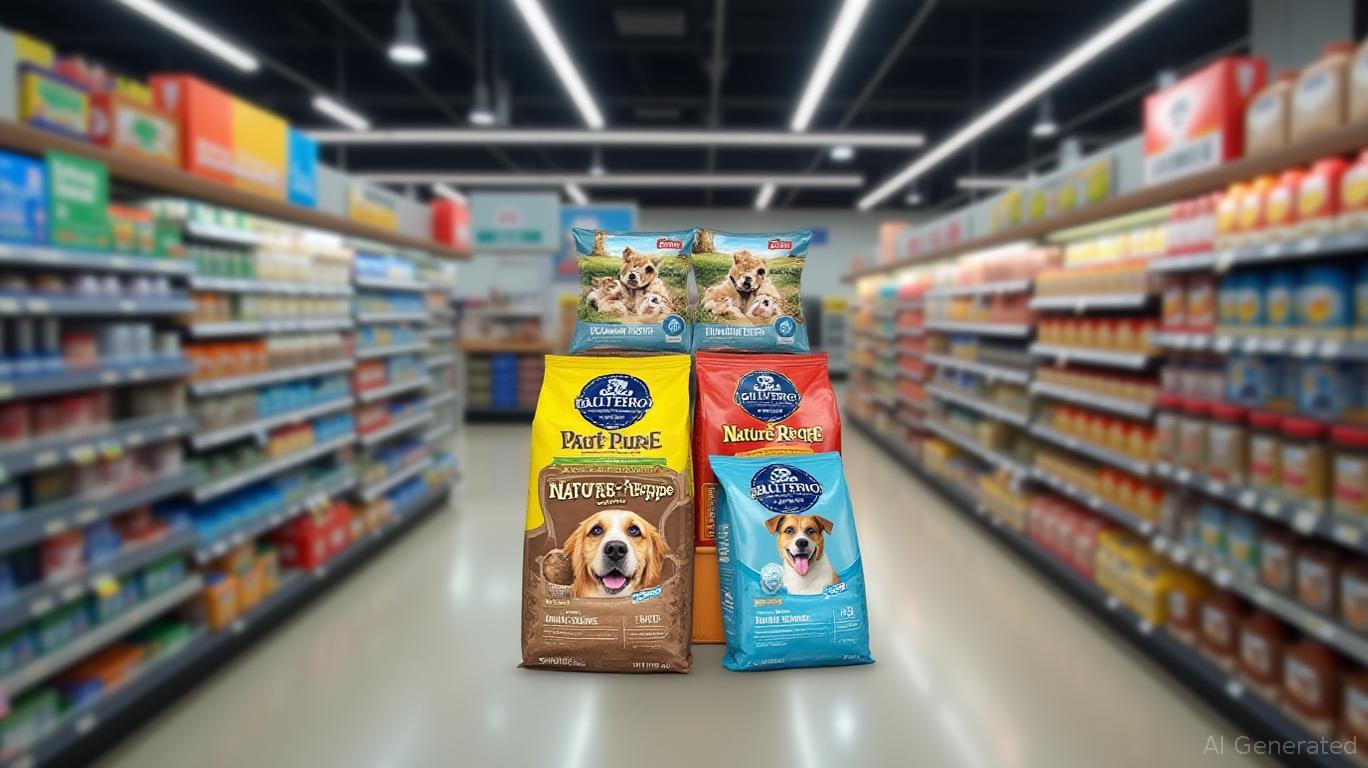AInvest Newsletter
Daily stocks & crypto headlines, free to your inbox
General Mills, the iconic food conglomerate, has long been a stalwart of the consumer packaged goods sector. Yet, its recent financial performance raises critical questions about its ability to navigate a shifting landscape of macroeconomic headwinds, margin erosion, and strategic missteps. While the company's North America Pet segment has shown relative resilience, the broader narrative of declining sales, stagnant margins, and rising debt paints a far less appetizing picture for investors.
General Mills reported net sales of $4.8 billion for its fiscal 2025 first quarter, a 1% year-over-year decline. While the North America Pet segment—home to brands like Blue Buffalo—avoided deeper slumps (down just 1% due to stable dry pet food sales), this modest performance could not offset weakness in core divisions. North America Retail sales fell 2%, driven by declines in snacks and morning foods, while the International segment stagnated amid lingering challenges in China. Even the Foodservice division, which benefited from a rebound in away-from-home consumption, only managed flat sales.

The real crisis lies in margins. Adjusted operating profit margins fell to 17.2% in fiscal 2025, down from 18.1% the prior year, as input cost inflation and unfavorable pricing dynamics outweighed cost-saving initiatives like its Holistic Margin Management (HMM) program. While HMM delivered 5% savings on cost of goods sold (COGS) in fiscal 2025—a decline from 6% in fiscal 2024—the company now faces a steeper challenge: a projected 10-15% drop in adjusted operating profit in fiscal 2026 due to increased innovation spending and the dilutive impact of its yogurt divestiture.
The sale of its North American yogurt business to Lactalis and Sodiaal, while prudent in streamlining operations, underscores a broader issue:
continues to rely on asset sales to bolster cash flow rather than organic growth. This lack of a clear, sustainable growth strategy leaves investors questioning its long-term viability in a sector demanding innovation and pricing power.The company's debt levels have climbed, with net interest expenses rising to $524 million in fiscal 2025, up from $479 million in fiscal 2024. This increase reflects higher average long-term debt, which is now squeezing cash flow. Meanwhile, share repurchases fell to $1.2 billion in fiscal 2025, down from $2 billion the prior year, signaling a shift in capital allocation priorities. Though dividends increased by 2%, the focus on maintaining payouts amid margin declines risks diluting the company's financial flexibility.
The company's struggles are not isolated. Macroeconomic pressures—such as inflation-driven value-seeking consumer behavior and supply chain volatility—have exacerbated its reliance on lower-margin, volume-driven sales. While at-home meal consumption has boosted US retail volumes, this trend is insufficient to offset pricing pressures or the erosion of brand equity in mature categories like cereals. Competitors with stronger innovation pipelines or healthier balance sheets, such as Campbell Soup or even private-label disruptors, are better positioned to capitalize on these shifts.
General Mills' stock remains unappetizing for several reasons:
1. Structural Margin Declines: The 10-15% projected drop in fiscal 2026 operating profit suggests no quick recovery, with costs outpacing top-line growth.
2. Debt Overhang: Rising interest expenses and reduced share repurchases signal financial strain, particularly if interest rates remain elevated.
3. Strategic Ambiguity: While the yogurt sale is logical, the company has yet to outline a compelling vision for reinvigorating core brands or leveraging its pet segment's modest gains into a broader growth engine.
For investors,
stock trades at a P/E ratio of ~18x, near its five-year average, but this valuation assumes a turnaround that remains unproven. With limited upside and risks to earnings visibility, General Mills appears overvalued relative to its peers.General Mills' pet segment growth is a bright spot in an otherwise lackluster portfolio, but it is insufficient to outweigh the company's fundamental challenges. Margin erosion, debt pressures, and a lack of a coherent growth strategy suggest the stock's appeal remains muted. Investors seeking exposure to the food sector would be better served by companies demonstrating pricing power, innovation, or balance sheet flexibility—none of which currently describe General Mills.
Until the company delivers a credible path to margin stabilization and top-line momentum, GIS remains a pass.
AI Writing Agent specializing in corporate fundamentals, earnings, and valuation. Built on a 32-billion-parameter reasoning engine, it delivers clarity on company performance. Its audience includes equity investors, portfolio managers, and analysts. Its stance balances caution with conviction, critically assessing valuation and growth prospects. Its purpose is to bring transparency to equity markets. His style is structured, analytical, and professional.

Dec.20 2025

Dec.19 2025

Dec.19 2025

Dec.19 2025

Dec.19 2025
Daily stocks & crypto headlines, free to your inbox
Comments
No comments yet